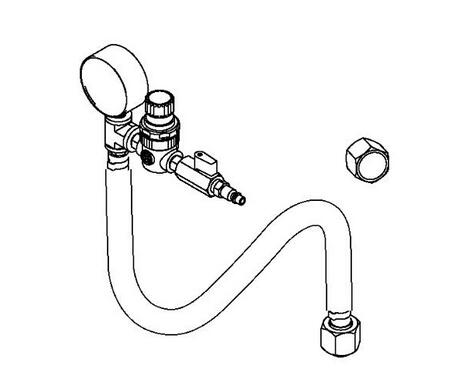
The GHG17 heavy-duty machine is a powerful and reliable piece of equipment used in various industries. To ensure its optimal performance, it is essential to regularly test its fuel system for any low-pressure leaks. In this article, we will guide you on how to conduct a FIS low-pressure leak test using the DDDL diagnostic software.
Before you begin the test, make sure you have the following equipment ready: the Detroit Diesel Diagnostic Link (DDDL) 8 software and the J48710 Air Pressure Test Kit Fuel system. Additionally, ensure that you have the W470589039100 Fuel system tool update kit without an MCM cooler.
Now let’s proceed with the step-by-step instructions for the GHG Heavy Duty Machine FIS Low Pressure Leak Test:
Preparations:
Detroit Diesel Diagnostic Link DDDL 8
J48710 Air Pressure Test Kit Fuel system

W470589039100 Fuel system tool update kit without an MCM cooler
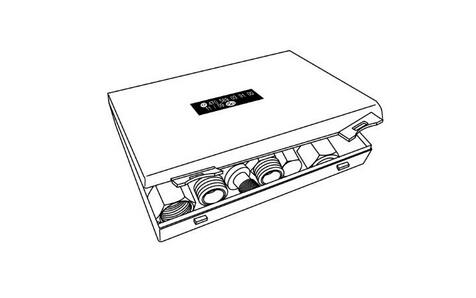
Procedures:
Note:Please review 13 TL-11REV to ensure changes to essential tool J-48710 have been made to improve the accuracy of detecting low pressure fuel system leaks.
Test as follows:
1. Begin by turning off the engine and applying the parking brake. Make sure to chock the wheels and take any other necessary safety precautions.
2. Remove the fuel tank fill caps.
3. Disconnect the fuel feed line from the fuel filter module.
WARNING: Remember to wear a face shield or goggles to protect yourself from pressurized air and flying particles during the test.
4. Install the J-48710 tool onto the fuel filter module.

5. Connect an air supply to the J-48710 tool.
6. Pressurize the fuel system to 517 kPa (75 psi) for six minutes.
7. Close the ball valve on the J-48710 tool.
8. Wait for two minutes.
9. Remove the return line from the fuel filter module and install the J-48710 cap tool on the fuel filter module return line fitting.
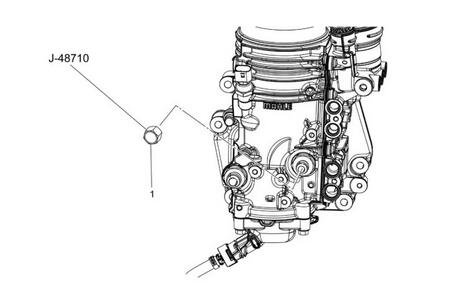
10. Reinstall the fuel tank fill caps.
11 With the ignition on and the engine off, connect to the MCM using the DDDL 8.15 DiagnosticLink.
12. In the DiagnosticLink software, click on the “service routines” tab.
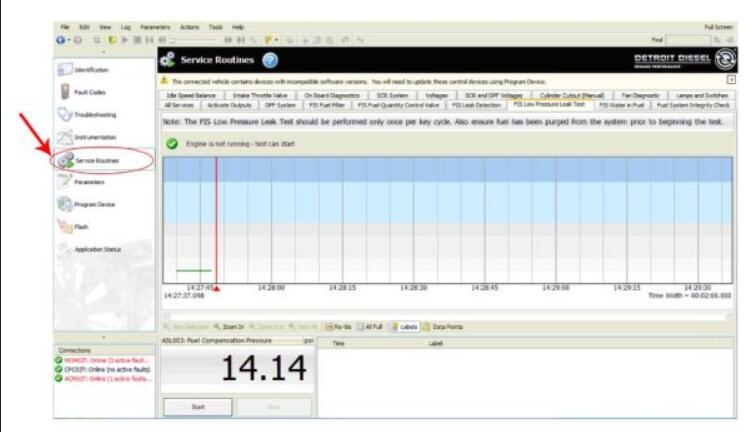
13. Then, select the “FIS Low Pressure Leak Test” tab.
WARNING: Remember to wear a face shield or goggles to protect yourself from pressurized air and flying particles during the test.
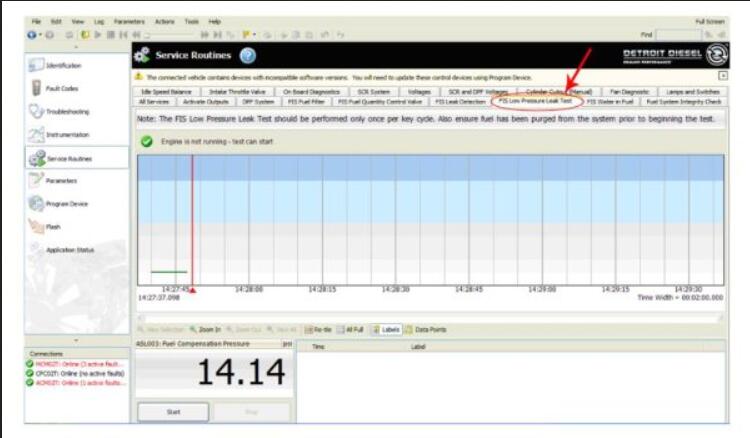
14. Use the J-48710 tool to pressurize the fuel system to 517 kPa (75 psi) for four minutes.
15. Close the ball valve on the J-48710 tool and disconnect the air supply.
Note: The fuel compensation pressure will increase after pressing the “Start” button in DiagnosticLink. The fuel compensation pressure sensor reads in absolute pressure, so it should show around 100 kPa (14.5 psi) more the fuel pressure gauge on the J-48710 tool. The fuel compensation sensor will read approximately 620 kPa (90 psi) when the J-48710 tool reads 517 kPa (75 psi).
16. Press the “Start” button in DiagnosticLink to begin the test.

17. Once the test is complete, review the DiagnosticLink log file for the test results.
18. Did the fuel system pass the FIS Low Pressure Leak Test?
– If yes, slowly remove the J-48710 cap tool from the fuel filter module, remove the J-48710 tool, and reinstall the fuel feed line and return line onto the fuel filter module. Then, return to the initial diagnostics that directed you to the FIS Low Pressure Leak Test.
– If no, proceed to step 19.
WARNING: Remember to wear a face shield or goggles to protect yourself from pressurized air and flying particles during the test.
19. Connect an air supply to the J-48710 tool.
20. Open the ball valve and pressurize the fuel system to 517 kPa (75 psi).
21. To locate the leak, use a soapy solution and spray it on connectors, fittings, and hoses as indicated in the “Potential Fuel Leak Points-Two-Filter Fuel System” procedure. Look for any bubbles or signs of leakage.
By following these steps, you can effectively perform a GHG17 Heavy Duty Machine FIS Low Pressure Leak Test using the DDDL diagnostic software. Regularly conducting this test will help ensure the proper functioning and reliability of your heavy-duty machine’s fuel system.
Leave a Reply